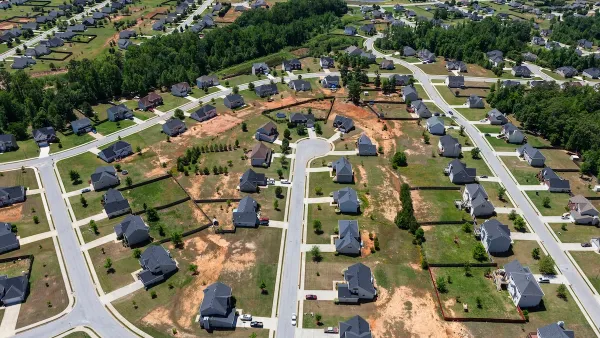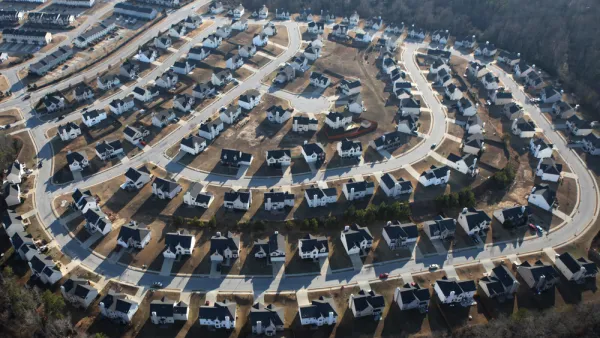How the rigidity of modern suburban development fails to prepare cities for the future.

Drawing on his experience in Annapolis, Maryland, Edward Erfurt highlights how older cities make better use of space than suburban developments. In Annapolis, Erfurt writes, “The city evolved organically, filling in nooks and crannies with buildings and spaces that adapted to the existing topography and ownership patterns.”
According to Erfurt, Annapolis is a city full of “irregularly shaped lots and buildings” that are squeezed into nooks and crannies to maximize the use of space. The result is a uniquely charming — and functional — urban landscape.
Suburban development, on the other hand, “is rigid, designed to be ‘complete’ upon construction with little expectation for future growth or change.” It also wastes resources by duplicating infrastructure, such as roads, that go largely underused. For Erfurt, “By building to a "finished state," suburban developments sacrifice the possibility of future expansion and adaptability.”
Erfurt offers some examples of ‘nook and cranny urbanism’ that could make modern cities more adaptable and diverse. These include “Positioning buildings closer to the street or corners of lots,” “Placing utilities strategically along future corridors” to reduce the cost of future development, and “Designing flexible parking layouts” that allow for future redevelopment of parking lots. Changes like these could yield a more “productive and sustainable model” for city planning that actively prepares for future change and growth.
FULL STORY: Nook and Cranny Urbanism: How To Maximize Every Inch of Space

National Parks Layoffs Will Cause Communities to Lose Billions
Thousands of essential park workers were laid off this week, just before the busy spring break season.

Retro-silient?: America’s First “Eco-burb,” The Woodlands Turns 50
A master-planned community north of Houston offers lessons on green infrastructure and resilient design, but falls short of its founder’s lofty affordability and walkability goals.

Delivering for America Plan Will Downgrade Mail Service in at Least 49.5 Percent of Zip Codes
Republican and Democrat lawmakers criticize the plan for its disproportionate negative impact on rural communities.

Test News Post 1
This is a summary

Test News Headline 46
Test for the image on the front page.

Balancing Bombs and Butterflies: How the National Guard Protects a Rare Species
The National Guard at Fort Indiantown Gap uses GIS technology and land management strategies to balance military training with conservation efforts, ensuring the survival of the rare eastern regal fritillary butterfly.
Urban Design for Planners 1: Software Tools
This six-course series explores essential urban design concepts using open source software and equips planners with the tools they need to participate fully in the urban design process.
Planning for Universal Design
Learn the tools for implementing Universal Design in planning regulations.
EMC Planning Group, Inc.
Planetizen
Planetizen
Mpact (formerly Rail~Volution)
Great Falls Development Authority, Inc.
HUDs Office of Policy Development and Research
NYU Wagner Graduate School of Public Service





























